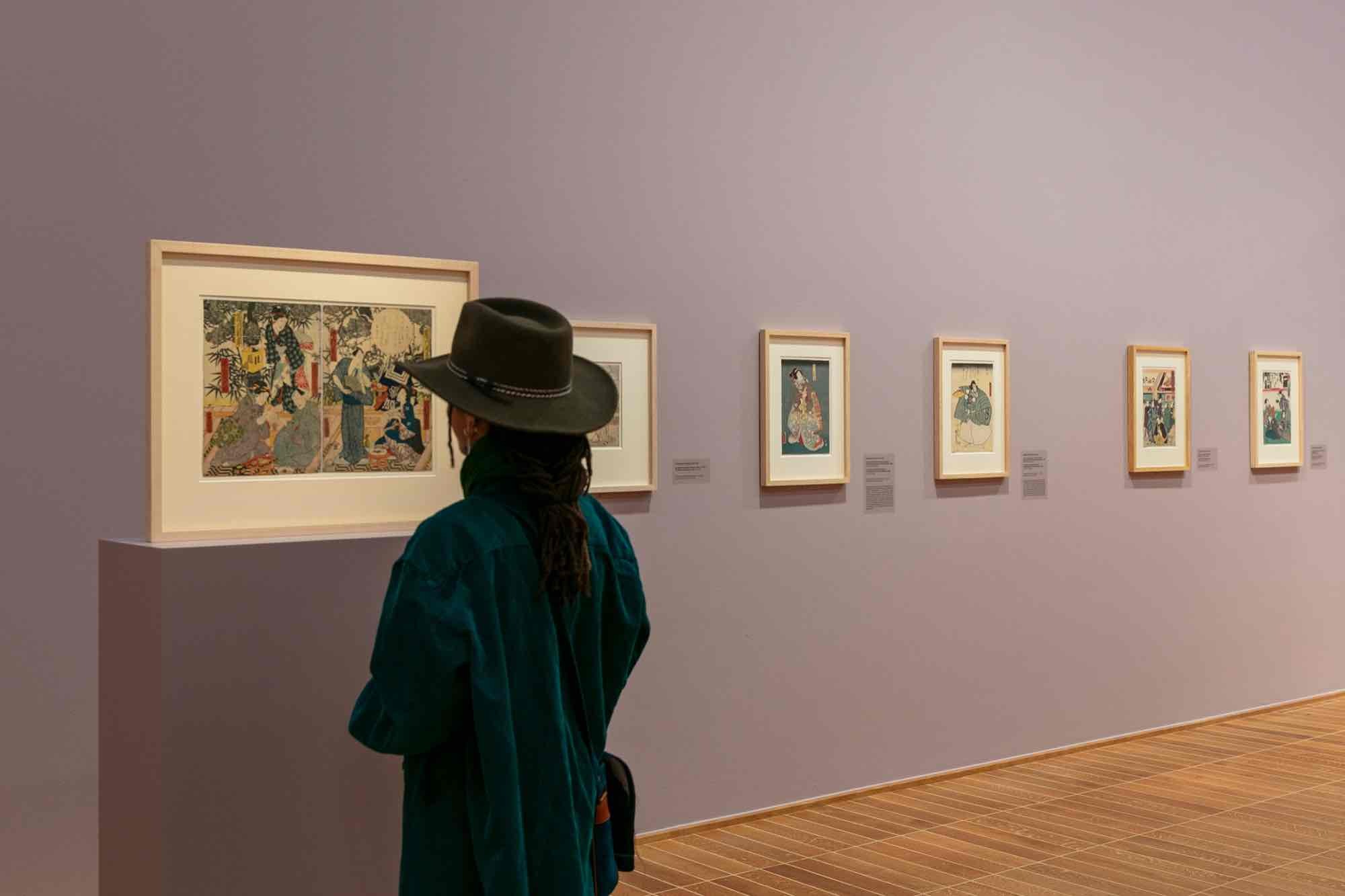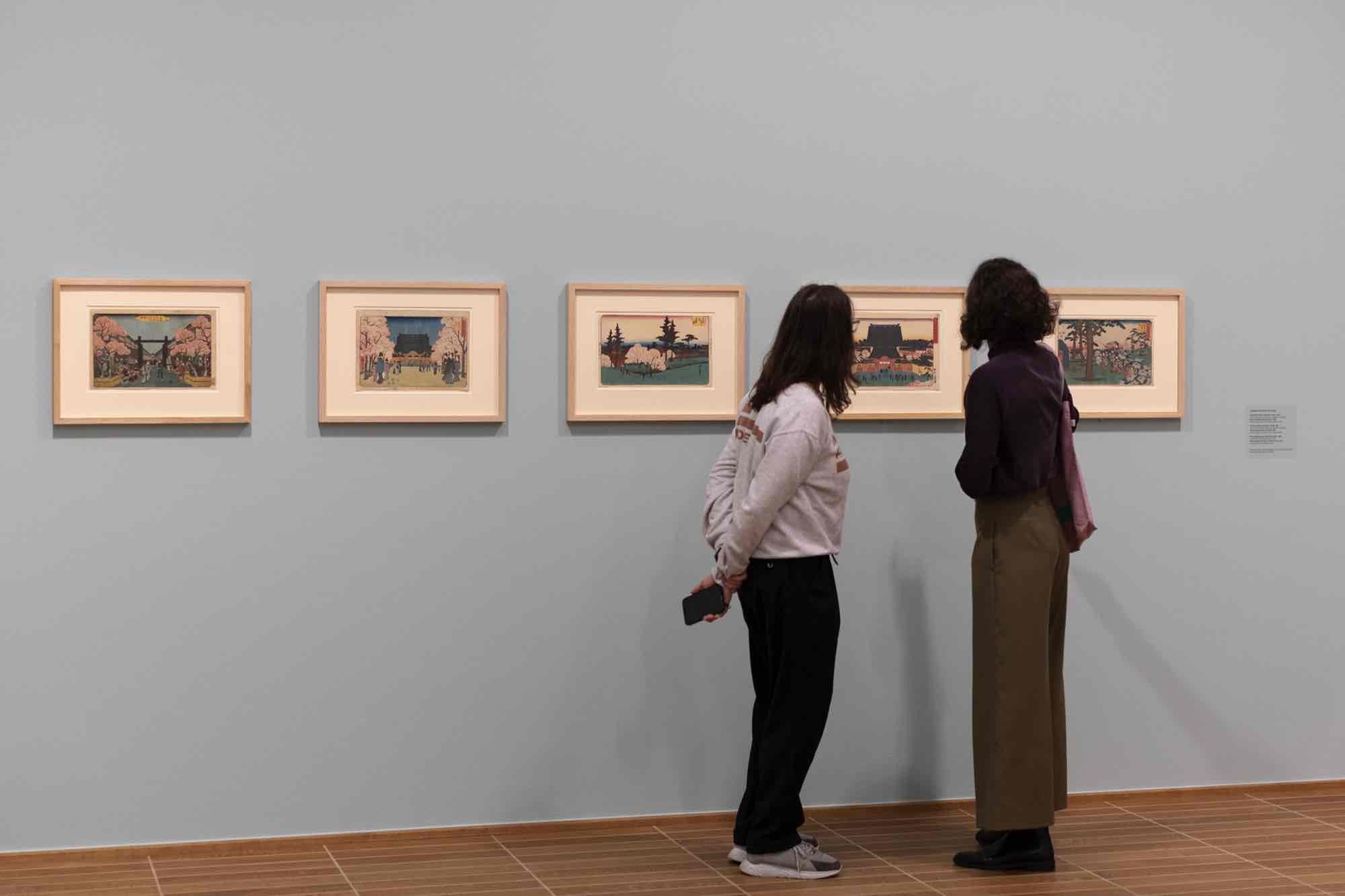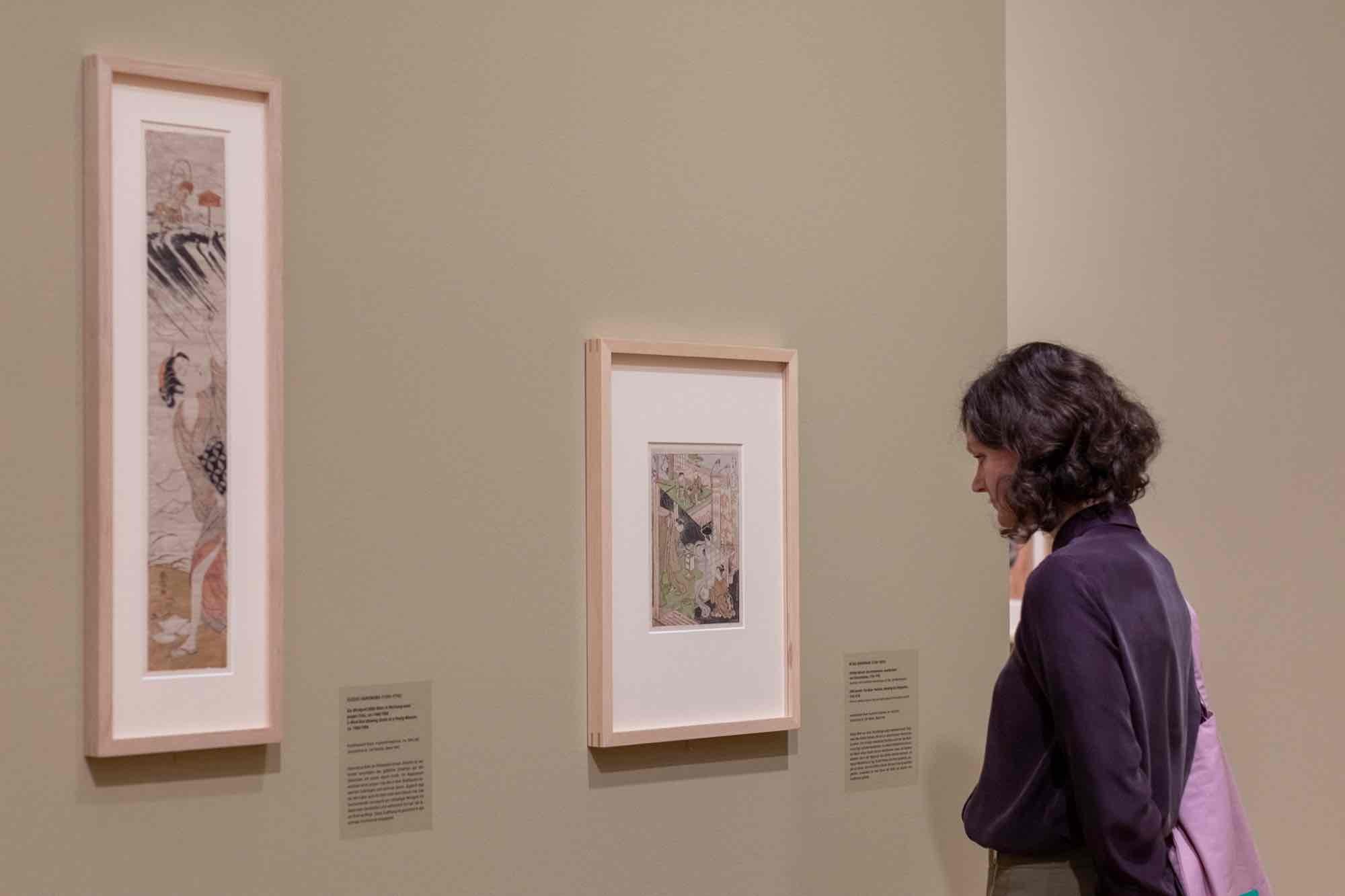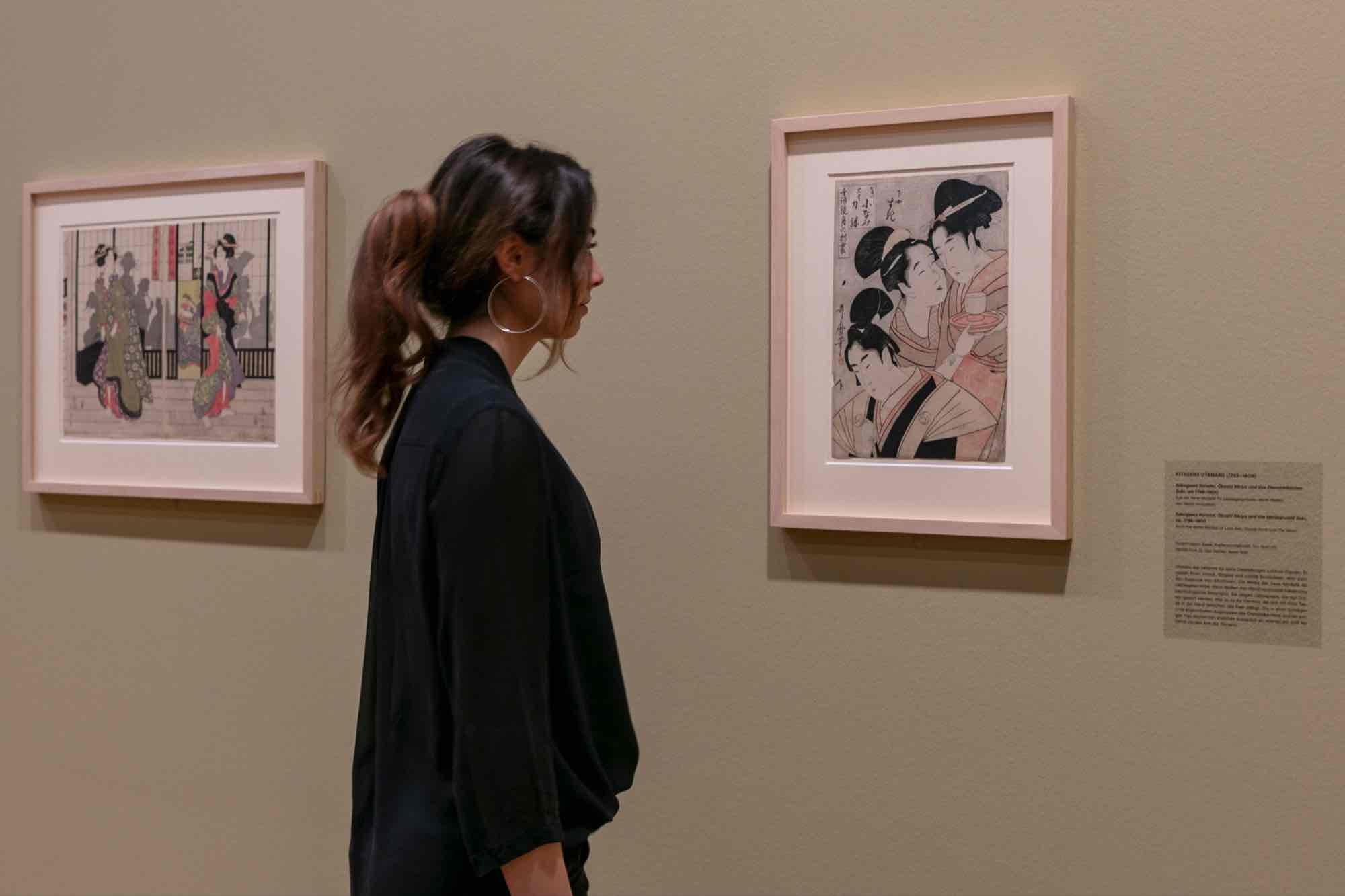Made in Japan
Color Woodblock Prints by Hiroshige, Kunisada and Hokusai
16 Mar - 21 Jul 2024
Curator: Judith Rauser with Hans Bjarne Thomsen
The exhibition Made in Japan: Color Woodblock Prints by Hiroshige, Kunisada, and Hokusai at the Kunstmuseum Basel | Neubau showcases a representative cross-section of the art of Japanese color woodblock printing in its heyday in the eighteenth and nineteenth centuries. All of the around 110 works are drawn from the holdings of the museum’s Kupferstichkabinett (Department of Prints and Drawings). Most of them have never been on public display.
The exhibition surveys the full range of Japanese color woodblock printing, from iconic landscapes to ideals of female beauty and tales of heroism. Many of these works were printed in large numbers. In some instances, however, few copies or even only a single one are known to be extant anywhere in the world today. In Made in Japan, portraits by Tōshūsai Sharaku (active 1794/95) are among the works that are now considered exceptionally rare treasures.
Depictions of nature and cultural life
The works of Utagawa Hiroshige (1797–1858) and Katsushika Hokusai (1760–1849) have been highly admired by artists and widely popular with general audiences in the Western world ever since they first circulated outside Japan in the second half of the nineteenth century. Their landscapes, in particular, even today inform the collective vision of Japan and are considered as symbols of the country’s nature, aesthetics, and identity—be they vistas of the sacred Mount Fuji, atmospheric views of famous temples, or picturesque coastal sceneries.
The thematically organized exhibition juxtaposes Hiroshige’s and Hokusai’s landscapes with works by a number of artists who turn the spotlight on the human figure and the cultural life of Edo (today’s Tokyo), a metropolis whose population then already numbered in the millions. Utagawa Kunisada (1786–1865), the most productive creator of color woodblock prints and, in his lifetime, the one with the greatest commercial success, is regarded as the grand master of depictions of actors. The immense popularity of Kabuki theater and the worshipful reverence that actors enjoyed in Japanese entertainment culture prompted the rise of a special genre of woodblock prints, the actor’s portrait—fan merchandise avant la lettre.
Utagawa Kuniyoshi (1798–1861) trained in the same school as Kunisada, but his visual language sharply contrasts with Kunisada’s serene, harmonious, and subtly shaded designs. In addition to scenes showing actors and performances on stage, Kuniyoshi specialized in heroic exploits. In his imaginative, expressive, and dramatic compositions, he devised an aesthetic that lives on today in manga comics and anime. These two artists’ works offer insight into the entertainment culture in the capital, which was famous for its pleasures. They kept the cult of the actors on and off the stage alive, often even beyond their deaths.
Another chapter of the exhibition is dedicated to a different kind of figure that inspired cultlike devotion: the courtesans and geishas who plied their trade in Edo’s fabled entertainment and red-light district of Yoshiwara and who were artfully represented as ideal embodiments of beauty, elegance, and sophistication. A second strand within the “beauties” genre depicts pairs of lovers; in designs by Kitagawa Utamaro (1753–1806) and others, the charm of such images is enhanced by subtle psychological observation and narrative elements.
The exhibition features works by well-known artists as well as prints by creators whose names will be familiar only to insiders such as Tōshūsai Sharaku, much about whom still remains a mystery to scholars. He was active only in 1794–1795 and in this brief period created a series of astutely observed portraits of actors that are regarded as a crowning achievement in the form.
The bequest of Dr. Carl Mettler The great majority of the Kunstmuseum Basel’s prints were bequeathed to it by the Basel chemist and art collector Dr. Carl Mettler (1877–1942) and came into the possession of the Kupferstichkabinett (Department of Prints and Drawings) in 1942. In addition to an important collection of drawings and prints by Swiss, German, and French artists, Mettler assembled an original compilation of Japanese woodblock prints of fine quality. A self-effacing connoisseur and passionate admirer of East Asian culture, he gathered around 320 such works.
The exhibition Made in Japan: Color Woodblock Prints by Hiroshige, Kunisada, and Hokusai at the Kunstmuseum Basel | Neubau showcases a representative cross-section of the art of Japanese color woodblock printing in its heyday in the eighteenth and nineteenth centuries. All of the around 110 works are drawn from the holdings of the museum’s Kupferstichkabinett (Department of Prints and Drawings). Most of them have never been on public display.
The exhibition surveys the full range of Japanese color woodblock printing, from iconic landscapes to ideals of female beauty and tales of heroism. Many of these works were printed in large numbers. In some instances, however, few copies or even only a single one are known to be extant anywhere in the world today. In Made in Japan, portraits by Tōshūsai Sharaku (active 1794/95) are among the works that are now considered exceptionally rare treasures.
Depictions of nature and cultural life
The works of Utagawa Hiroshige (1797–1858) and Katsushika Hokusai (1760–1849) have been highly admired by artists and widely popular with general audiences in the Western world ever since they first circulated outside Japan in the second half of the nineteenth century. Their landscapes, in particular, even today inform the collective vision of Japan and are considered as symbols of the country’s nature, aesthetics, and identity—be they vistas of the sacred Mount Fuji, atmospheric views of famous temples, or picturesque coastal sceneries.
The thematically organized exhibition juxtaposes Hiroshige’s and Hokusai’s landscapes with works by a number of artists who turn the spotlight on the human figure and the cultural life of Edo (today’s Tokyo), a metropolis whose population then already numbered in the millions. Utagawa Kunisada (1786–1865), the most productive creator of color woodblock prints and, in his lifetime, the one with the greatest commercial success, is regarded as the grand master of depictions of actors. The immense popularity of Kabuki theater and the worshipful reverence that actors enjoyed in Japanese entertainment culture prompted the rise of a special genre of woodblock prints, the actor’s portrait—fan merchandise avant la lettre.
Utagawa Kuniyoshi (1798–1861) trained in the same school as Kunisada, but his visual language sharply contrasts with Kunisada’s serene, harmonious, and subtly shaded designs. In addition to scenes showing actors and performances on stage, Kuniyoshi specialized in heroic exploits. In his imaginative, expressive, and dramatic compositions, he devised an aesthetic that lives on today in manga comics and anime. These two artists’ works offer insight into the entertainment culture in the capital, which was famous for its pleasures. They kept the cult of the actors on and off the stage alive, often even beyond their deaths.
Another chapter of the exhibition is dedicated to a different kind of figure that inspired cultlike devotion: the courtesans and geishas who plied their trade in Edo’s fabled entertainment and red-light district of Yoshiwara and who were artfully represented as ideal embodiments of beauty, elegance, and sophistication. A second strand within the “beauties” genre depicts pairs of lovers; in designs by Kitagawa Utamaro (1753–1806) and others, the charm of such images is enhanced by subtle psychological observation and narrative elements.
The exhibition features works by well-known artists as well as prints by creators whose names will be familiar only to insiders such as Tōshūsai Sharaku, much about whom still remains a mystery to scholars. He was active only in 1794–1795 and in this brief period created a series of astutely observed portraits of actors that are regarded as a crowning achievement in the form.
The bequest of Dr. Carl Mettler The great majority of the Kunstmuseum Basel’s prints were bequeathed to it by the Basel chemist and art collector Dr. Carl Mettler (1877–1942) and came into the possession of the Kupferstichkabinett (Department of Prints and Drawings) in 1942. In addition to an important collection of drawings and prints by Swiss, German, and French artists, Mettler assembled an original compilation of Japanese woodblock prints of fine quality. A self-effacing connoisseur and passionate admirer of East Asian culture, he gathered around 320 such works.









